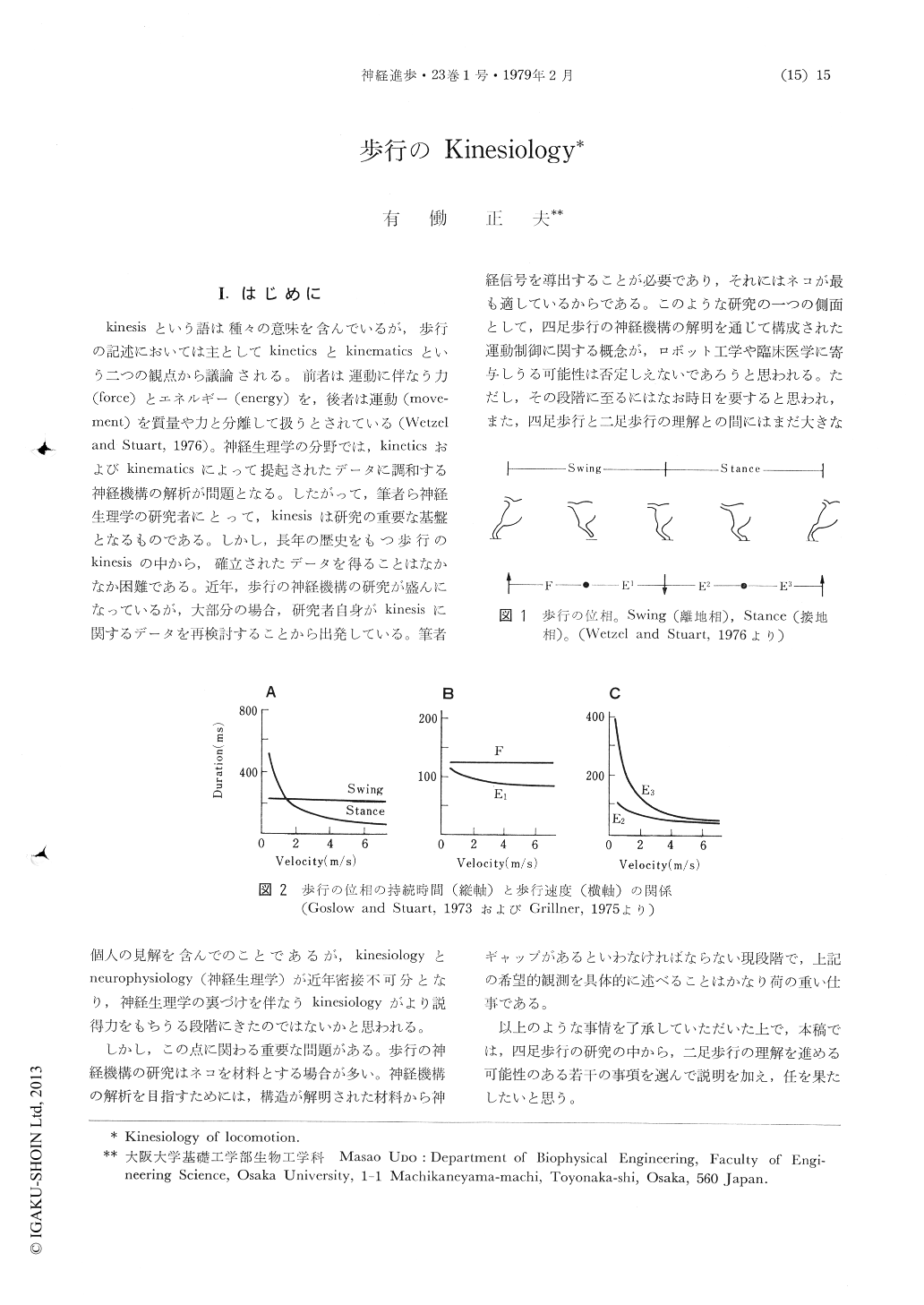Japanese
English
- 有料閲覧
- Abstract 文献概要
- 1ページ目 Look Inside
I.はじめに
kinesisという語は種々の意味を含んでいるが,歩行の記述においては主としてkineticsとkinematicsという二つの観点から議論される。前者は運動に伴なう力(force)とエネルギー(energy)を,後者は運動(movement)を質量や力と分離して扱うとされている(Wetzeland Stuart,1976)。神経生理学の分野では,kineticsおよびkinematicsによって提起されたデータに調和する神経機構の解析が問題となる。したがって,筆者ら神経生理学の研究者にとって,kinesisは研究の重要な基盤となるものである。しかし,長年の歴史をもつ歩行のkinesisの中から,確立されたデータを得ることはなかなか困難である。近年,歩行の神経機構の研究が盛んになっているが,大部分の場合,研究者自身がkinesisに関するデータを再検討することから出発している。筆者個人の見解を含んでのことであるが,kinesiologyとneurophysiology(神経生理学)が近年密接不可分となり,神経生理学の裏づけを伴なうkinesiologyがより説得力をもちうる段階にきたのではないかと思われる。
しかし,この点に関わる重要な問題がある。歩行の神経機構の研究はネコを材料とする場合が多い。
Recently certain descriptions have been made on locomotor patterns of walking cats. Neuronal organization is best known in cats, and recent development in neurophysiology has made it possible to analyse neuronal activity in the walkingcats, thus neural mechanisms of locomotion can be best studied in cats. Among many behavioral data, interlimb coordination of cat locomotion, when its neuronal correlates are investigated, is particularly capable of providing insights for understanding bipedal walking.
An example of such behavioral aspects is given as follows.

Copyright © 1979, Igaku-Shoin Ltd. All rights reserved.


